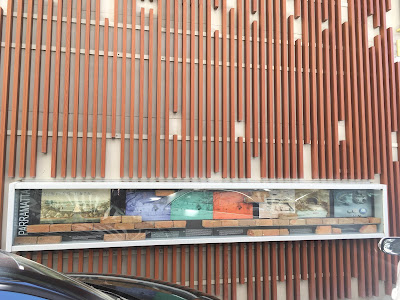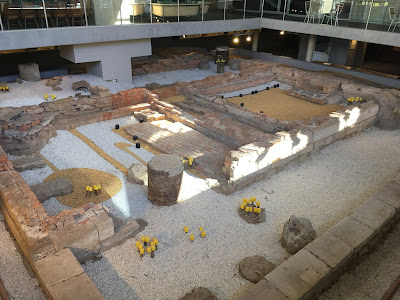After the diggers leave, the machines roll in, and the past is dug up and dumped in landfill, what happens to the archaeology? The hours of toil, painstakingly unpicking the past. Here in NSW, interpretation of a site's history, often incorporating the results of any archaeological investigations, is becoming a standard condition of any new development.
Parramatta offers a great wealth of interpretation examples - from the classic plaques and floor inlays (a personal favourite), to the preservation of a whole convict hut. To guide the interested visitor I've prepared a nifty zine that includes a map to guide you through Parramatta - link available here: Parramatta's archaeology (a zine) This tour followed a guide prepared by Heritage NSW that includes a brief discussion of each site's history.
Here a couple of examples of Parramatta's past that can be glimpsed in car parks, walkways, and foyers.
Remains of what was Rowland Hassall's house - now a carpark display. Hassall was a prominent figure in the early growth of Parramatta. Now commemorated with by a school named in his honour.
This is my personal favourite - a brick well, excavated in its entirety, and then rebuilt in its original location once the building was complete. The excavation undertaken on this site was a major project from the 1980s - referred to as the 'Babe in the Woods'. Convict huts, pub and a cordial factory.
The Parramatta Justice Precinct, site of successive hospitals from the earliest dates of Parramatta's existence (as a European settlement). Features pavement inlays of the former building locations, and archaeological remains masquerading as moss gardens.
More convict huts (the Australian equivalent to the Romans in Britain...). A well presented display that puts safety first - unfortunately, nobody could come up with a better design solution that yellow mushroom caps for the left over rebar from concrete piles. Above this display is a
great bar, or so I've been told.




Comments
Post a Comment